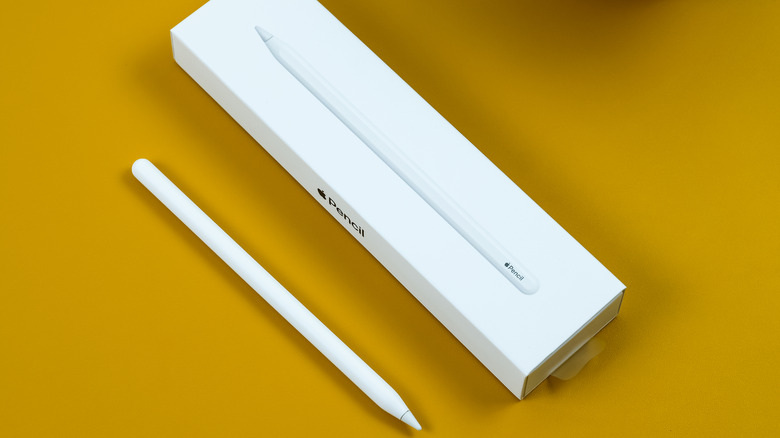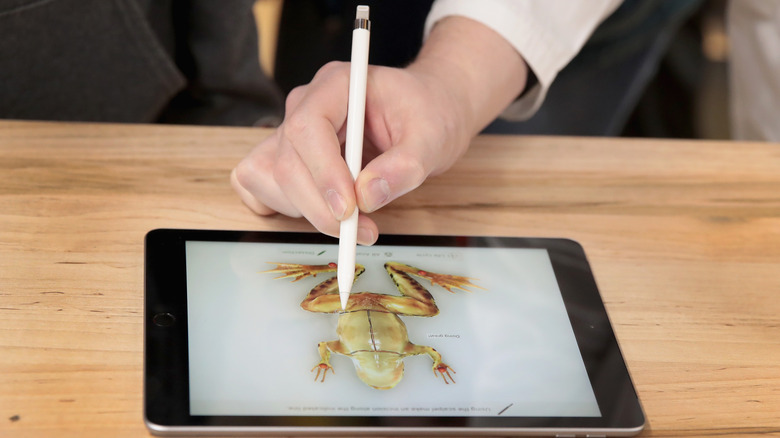Do Apple Pencils Work With iPhones? Here's A Look At Device Compatibility
We may receive a commission on purchases made from links.
Due to its high precision and low latency, the Apple Pencil is considered a handy tool for iPad users, especially when using any of the many iPad drawing and animation apps available on the App Store. The Pencil is also convenient for note-taking and annotating documents, helping boost productivity and workflow for many users. So, given how useful the Apple Pencil is for iPad users, it's logical to wonder if the peripheral works with the iPhone as well.
Unfortunately, the Apple Pencil is not compatible with any of Apple's smartphones. This is due to the difference in the touchscreen technologies present on the iPad and iPhone. The iPhone has a standard capacitive touchscreen that is more sensitive to finger touch. It does not have the electromagnetic field technology the iPad tablets use to interface with the Apple Pencil, rendering the stylus unusable on the smartphone's display.
It's unclear why Apple hasn't built an iPhone that supports the Apple Pencil. Some commentators suggest that Apple likely wants a distinction between its smartphones and tablets. After all, it would have to modify the iOS operating system to accommodate the Apple Pencil's functions. Not only that, there's no guarantee that many iPhone users would want to get a Pencil, either, considering that Apple sells its peripheral separately, unlike the included stylus that comes with Samsung's Galaxy Ultra phones.
Is the Apple Pencil compatible with all iPads?
Apple has released four models of the Apple Pencil so far, and much like all generational releases of its tech products, each iteration of the stylus is designed to work only with select iPad models. As a general rule, each Apple Pencil model is compatible with the iPad devices released within the same year and a few years after the stylus. Thus, the first-generation Apple Pencil (released in 2015) and Apple Pencil 2 (released in 2021) are only compatible with older-generation iPads, while the Apple Pencil with USB-C (released in 2023) and Apple Pencil Pro (released in 2024) require iPads running iPadOS 17 or newer. Therefore, it is important to check an Apple Pencil's compatibility with your iPad before buying.
Additionally, there are key hardware differences between every Apple Pencil iteration that go beyond software compatibility. The first-generation Pencil only charges via a compatible iPad's Lightning port, for example, while the second-generation charges wirelessly via magnetic attachment to the iPad. The USB-C model, as its name suggests, charges via the USB-C port tucked in its bottom cap. Meanwhile, charging the Apple Pencil Pro entails attaching the flat side of the stylus to the magnetic connector on compatible iPads. It is also worth noting that the latest Apple Pencil Pro packs brand-new features, such as squeeze gestures, haptic feedback, and barrel roll, that aren't available on older Pencils.

